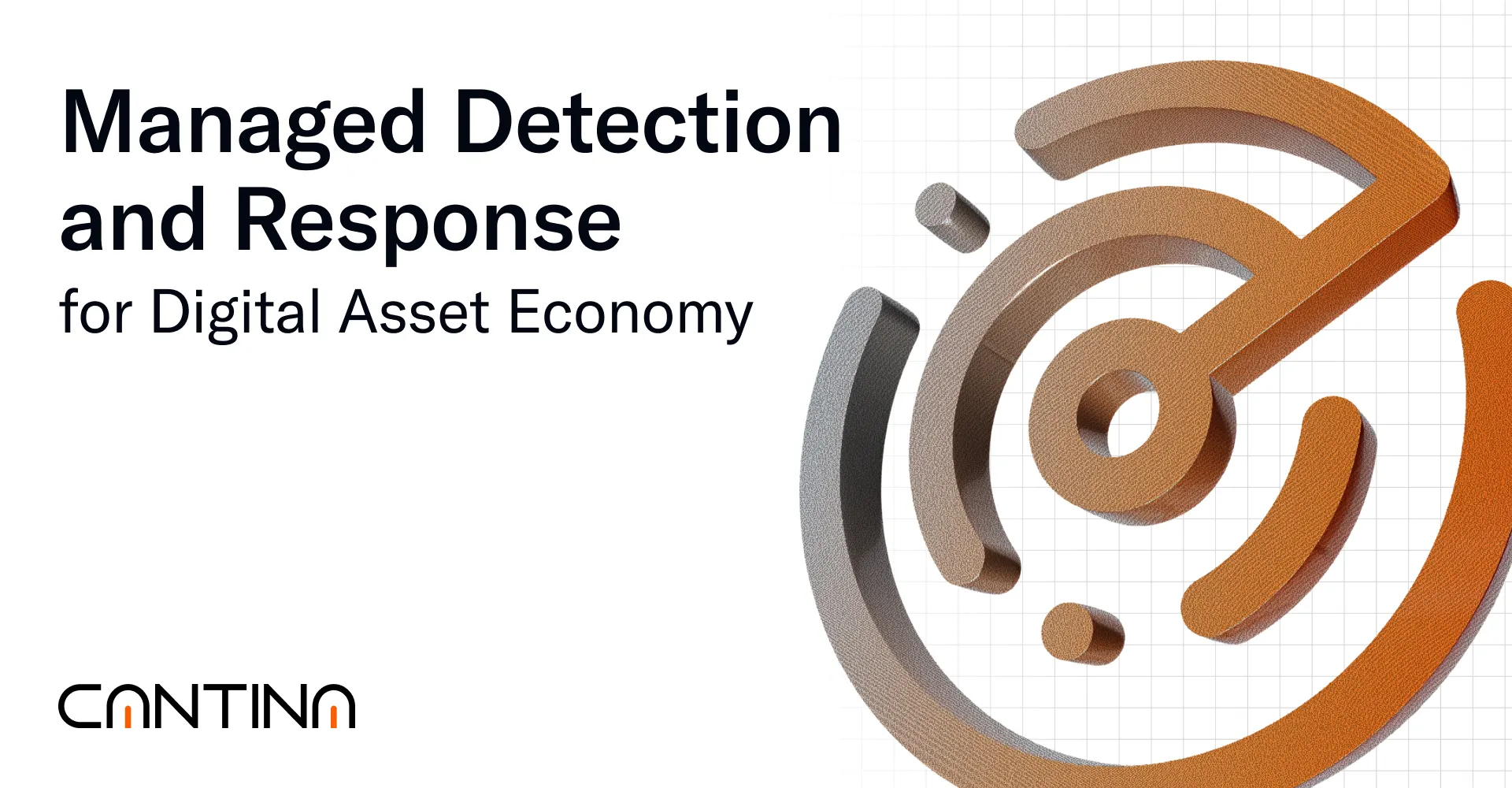Web3 infrastructure has evolved into a complex, interconnected environment. Protocols today manage large volumes of capital, operate across multiple chains, and interact with external systems in real time. In this landscape, threats move quickly. A single vulnerability can trigger a chain reaction that impacts assets, governance, and trust in a matter of minutes. To operate securely, organizations need a unified security layer that connects proactive detection, structured escalation, operational readiness, and long-term resilience.
Cantina developed Managed Detection & Response (MDR) to meet this shift. We saw too many protocols depending on disconnected audits, fragmented bounties, and reactive triage with no operational framework. When things go wrong, these solutions fall short. We’ve taken best in class security playbooks from traditional finance and adapted them to the dynamics unique to Web3.
MDR emerged from years of working with high-value teams during real-world crises. It is the product of lessons learned under pressure, codified into a structured system that allows protocols to act decisively when it matters most.
What is MDR
MDR is a security solution purpose-built for teams operating at scale. In an environment where exploit speed outpaces human reaction, MDR fills the gap between detection, containment, and recovery. It introduces proactive preparation through simulations, structured playbooks, and clearly assigned roles so that when a threat emerges, teams act with speed and clarity. It is the operational layer that enables organizations to triage, contain, and respond before attackers can extract value.
Cantina MDR integrates strategy, operations, and emergency response into five structured layers that evolve with your protocol. It is designed to meet the real-time demands of decentralized infrastructure.
Why MDR is Required in the Digital Asset Economy
Protocols today secure billions in assets and operate in fully transparent environments. When a vulnerability is discovered, it becomes public by default. Attackers move within minutes. Protocols are composable and deeply integrated. An exploit in one contract can transmit through multiple systems before traditional remediation processes can begin.
Audit reports, isolated bug bounties, and passive monitoring do not provide the level of readiness required to operate safely in production. MDR provides the missing infrastructure: an end-to-end framework for response, coordination, and containment.
Where Traditional Security Fails
- Blind spots: MDR identifies exposed assets, dependency risks, and governance bottlenecks
- Gaps in response: Most teams lack a dedicated process for triage, escalation, or containment
- Lack of readiness: Without rehearsed playbooks, coordinated recovery is slow and error-prone
- Absence of leadership: Incidents require SMEs trained in decision-making under pressure
MDR solves for all of the above by embedding a live response architecture into the organization.
The MDR Operating Model
Cantina’s MDR system operates through five layers:
- Surface: Map threat models, assets, and risks to remove blind spots
- Structure: Build operational playbooks spanning engineering, legal, and governance domains
- Stress: Run realistic attack simulations to prepare teams before a real exploit occurs
- Signal: Monitor critical events continuously and respond under <15-minute SLAs
- Shield: Contain threats and execute structured recovery with root cause analysis
This approach turns what is typically an improvised scramble into a structured, testable response pipeline.
Cantina MDR in Action: Coordinated $4M Asset Recovery with Panoptic
When a vulnerability was reported in Panoptic, MDR playbooks were immediately activated. War rooms were established. User funds were secured before attackers could act. A whitehat recovery was executed across 10 contracts and 3 chains. Over 99% of user assets were preserved, with zero exploit.
MDR transformed a high-risk, multi-chain exposure into a contained and resolved event. This is the standard every protocol should operate with.
Who This is For
- Protocols managing significant TVL
- Teams with complex contract architectures
- Organizations preparing for institutional exposure or regulation
- Builders who treat operational continuity as a product requirement
The Future Belongs to Prepared Organizations
In DeFi, there are no isolated failures. Incidents spread fast, and responses must be faster. MDR provides the operational security layer required to meet that demand.
Protocols that rely solely on audits and alerts are exposed. MDR closes the gap between , proactive preparation, identification and resolution - ensuring your protocol stays live, contained, and trusted.
Talk to Cantina to integrate MDR into your security architecture.




